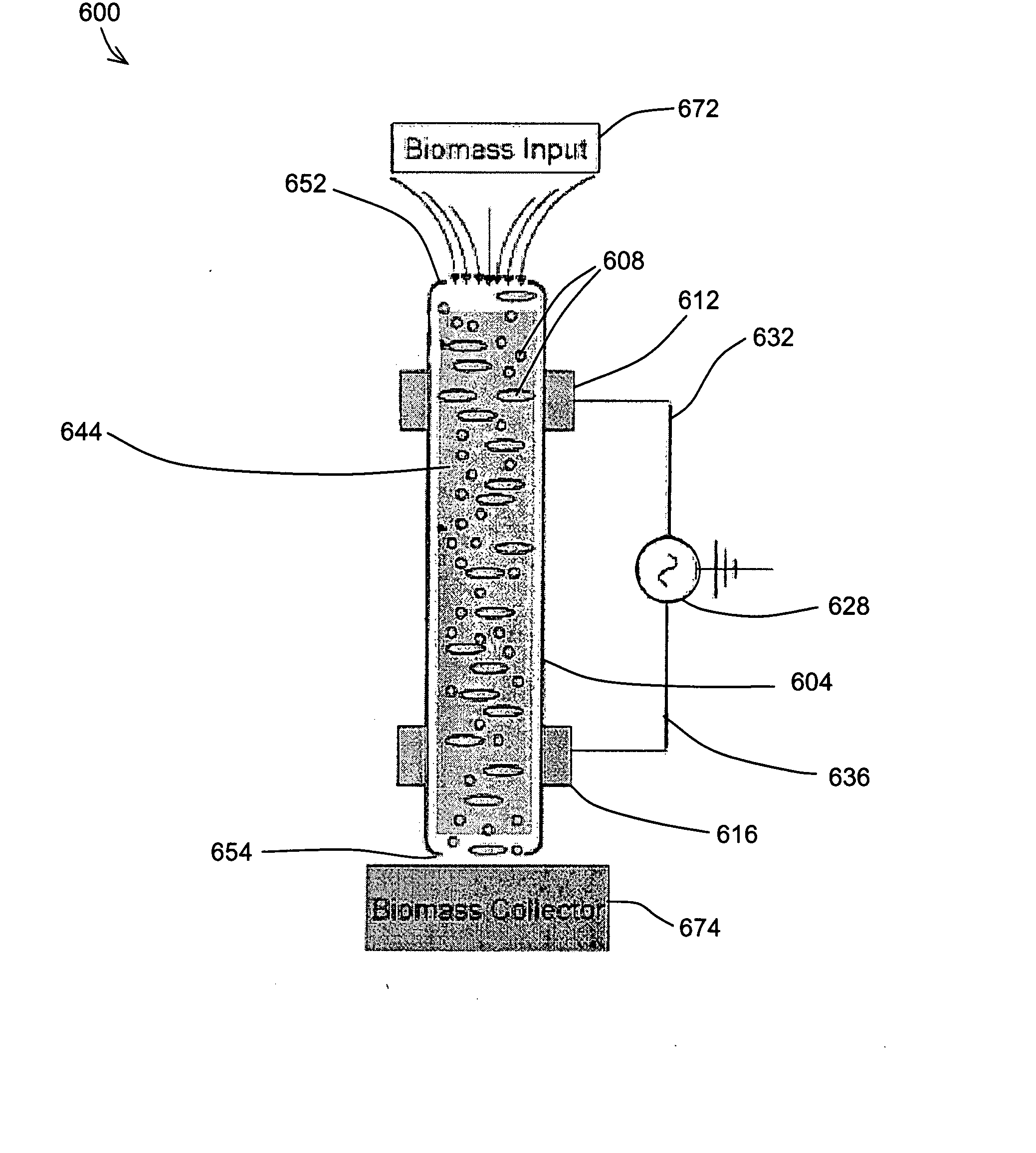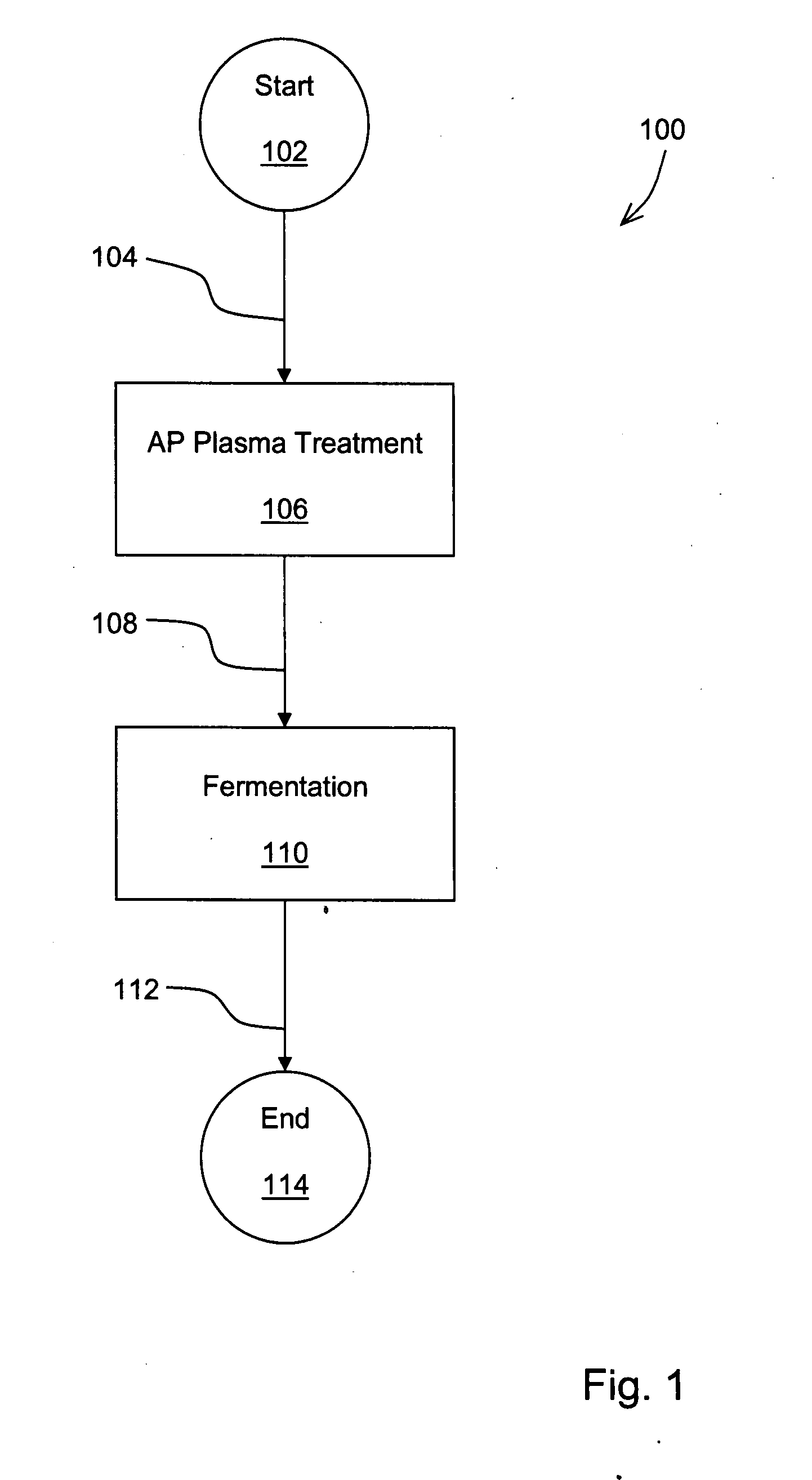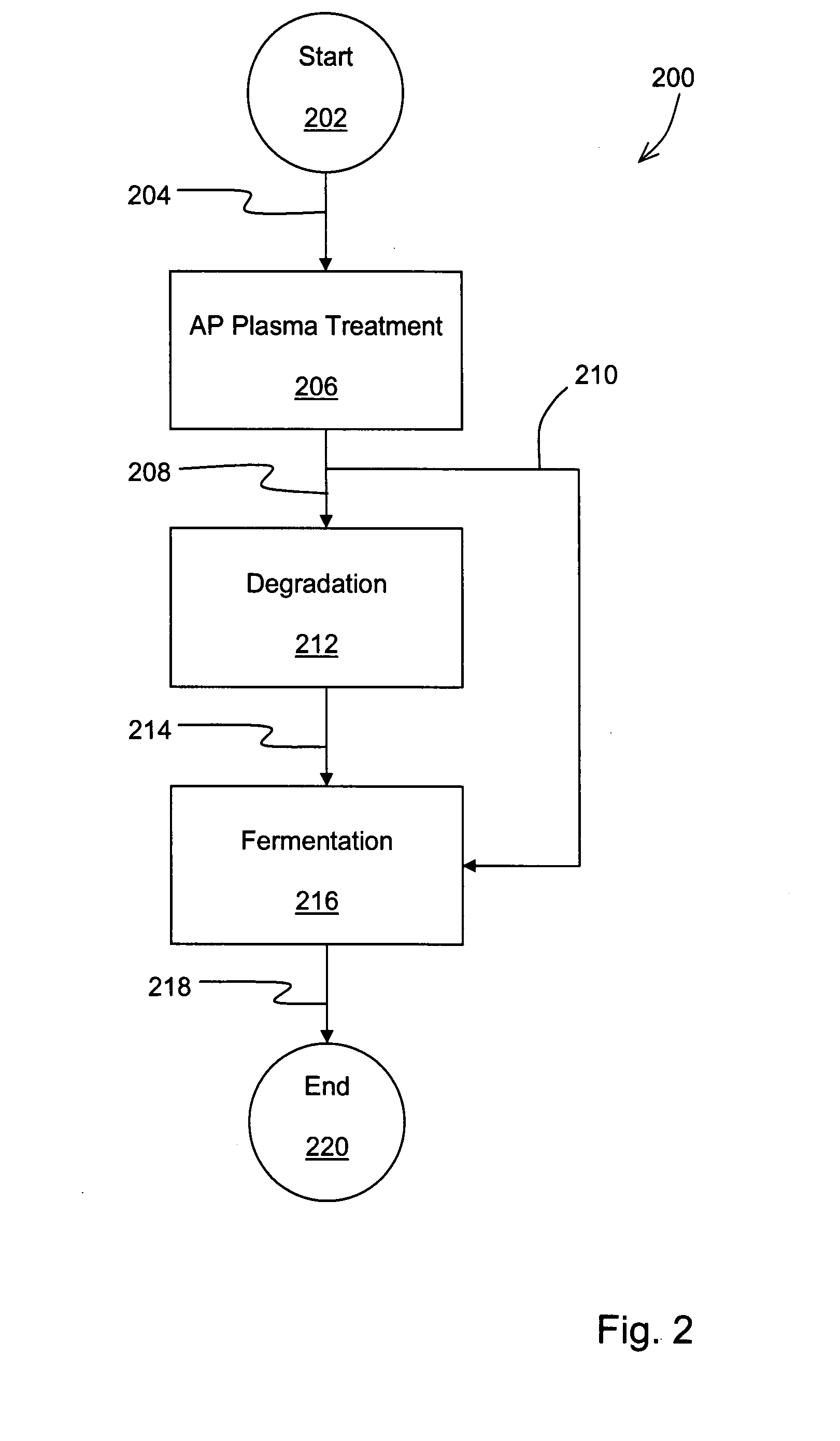Processing cellulosic material utilizing atmospheric-pressure plasma
- Summary
- Abstract
- Description
- Claims
- Application Information
AI Technical Summary
Benefits of technology
Problems solved by technology
Method used
Image
Examples
example 1
[0095]FIG. 10 is a schematic diagram 1000 illustrating an experimental implementation carried out to determine the impact of treatment by AP plasma on the process of acid hydrolysis of cellulosic material. In this experiment, the cellulosic material studied was biomass, specifically maple sawdust. In FIG. 10, the samples are designated Sample #1, Sample #2, and Sample #3. Each of Sample #1, Sample #2, and Sample #3 consisted of 1 gram (g) of dry maple sawdust. The diagram 1000 illustrates three experimental pathways 1002, 1004 and 1006 to which the three separate but identical samples of maple sawdust were respectively subjected. In the experimental pathways 1002, 1004 and 1006, Sample #1, Sample #2, and Sample #3 were respectively subjected to a conventional, relatively dilute acid hydrolysis process, at block 1022. Each hydrolysis process 1022 entailed placing Sample #1, Sample #2, or Sample #3 in a respective glass container containing a 19 mL mixture of 0.5-M H2SO4 (sulfuric aci...
example 2
[0100] This experiment utilized the reduction of potassium permanganate (KMnO4) with glucose as a purple-pink indicator in conjunction with acid hydrolysis of pure cellulose. Deep purple-colored permanganate (MnO4−) can be reduced to the faintly pink Mn+2 cation in an acidic solution, where Mn is in a +2 oxidation state, as represented by the following stoichiometric expression:
MnO4−+8H++5e−→Mn+2+4H2O.
[0101] The permanganate reacts with the glucose in solution, so as the process of acid hydrolysis is breaking down the cellulose into glucose, the permanganate is consumed, thus precipitating the loss of the purple or pink color over time. The amount of time required for the solution to lose its color indicates how effective the acid hydrolysis process is at breaking down the cellulose. Therefore, the effectiveness of AP plasma treatment as a precursor to acid hydrolysis will be indicated in the case where the permanganate / glucose reactions of plasma-treated samples run to completion...
example 3
[0107] This experiment was conducted to determine whether AP plasma treatment itself was capable of producing glucose from cellulose. Three samples of pure cellulose were provided, weighing 225.1 mg, 231 mg and 226.9 mg, respectively. Each sample was dried in a vacuum oven under 30 mm Hg of pressure at a temperature of 110° C. for two and one half hours. This allowed for full evaporation of the water in the cellulose, using knowledge gained from previous experiments that determined the time to dry 200 mg of cellulose was approximately one hour. After the drying cycle, the dry weights of the three samples were measured to be 203, 210.9 and 206.9 mg, respectively. Each sample was then treated by AP plasma by placing the sample in an AP plasma apparatus, similar to the apparatus 500 described above and illustrated in FIG. 5, and exposing the sample to a plasma generated by the AP plasma apparatus. The AP plasma apparatus was operated at a voltage of 5 kV and a current of 50 mA. Alumina...
PUM
| Property | Measurement | Unit |
|---|---|---|
| Temperature | aaaaa | aaaaa |
| Pressure | aaaaa | aaaaa |
| Concentration | aaaaa | aaaaa |
Abstract
Description
Claims
Application Information
 Login to View More
Login to View More - R&D Engineer
- R&D Manager
- IP Professional
- Industry Leading Data Capabilities
- Powerful AI technology
- Patent DNA Extraction
Browse by: Latest US Patents, China's latest patents, Technical Efficacy Thesaurus, Application Domain, Technology Topic, Popular Technical Reports.
© 2024 PatSnap. All rights reserved.Legal|Privacy policy|Modern Slavery Act Transparency Statement|Sitemap|About US| Contact US: help@patsnap.com










